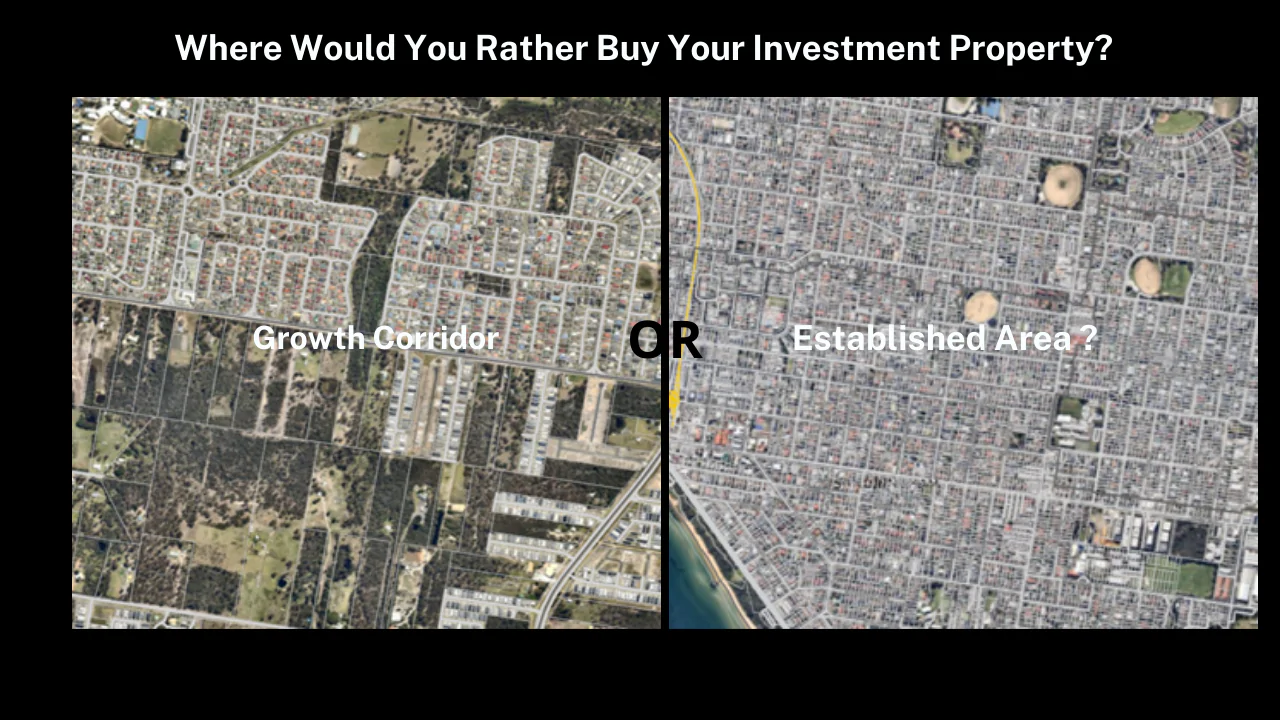

One of the frequent things I see and hear from residential investors is getting caught up in the idea of investing in a ‘growth corridor’.
The idea of a growth corridor is clever marketing, but for unsuspecting buyers, it can mean years of very little capital growth. When I purchased my first property as a young student, I had the opportunity of purchasing a property in an established suburb or one in a growth corridor. The numbers paint a picture.
Both properties experienced growth – one was just a lot more. Unfortunately, for me, I chose the latter and it’s a mistake I don’t want other people to make, as it likely cost me hundreds of thousands of dollars in lost opportunity cost.
The main thing to understand about a growth corridor is that growth refers to the fact that the area is growing. That normally means there might be new roads, new infrastructure and even new people moving to the area. However, there is certainly no guarantee of capital growth and the only real thing that is growing is the number of houses.
The main issue with areas that would be considered growth corridors is they have a virtually unlimited supply of land in which to build more properties. If you have a steady stream of new supply in the form of house and land packages, then there is no real way for those established properties to gain in value dramatically.
Contrast this to a more established suburb, in the inner-city area of a major capital city. In places like Melbourne and Sydney, there is simply no more land. While it’s possible to build upwards in the form of units, buying houses in these areas that have limited land around them puts you in a far stronger position without considering any other factor at all.
As the lending criteria gets tighter and interest rates likely to rise in 2023 / 2024, identifying an investment grade asset in a supply constrained market has never been more important.
Example of a Growth Corridor – Look at the Potential Oversupply above
We can see in the images above what a growth corridor might look like on a map. There’s so much land around the place, that unless the population of these areas somehow skyrockets overnight, you will always struggle to achieve capital growth in these locations.
Look at the two images and ask yourself, which is the safest bet?
Established Suburbs – No More Land to Develop
So, where would you rather buy?